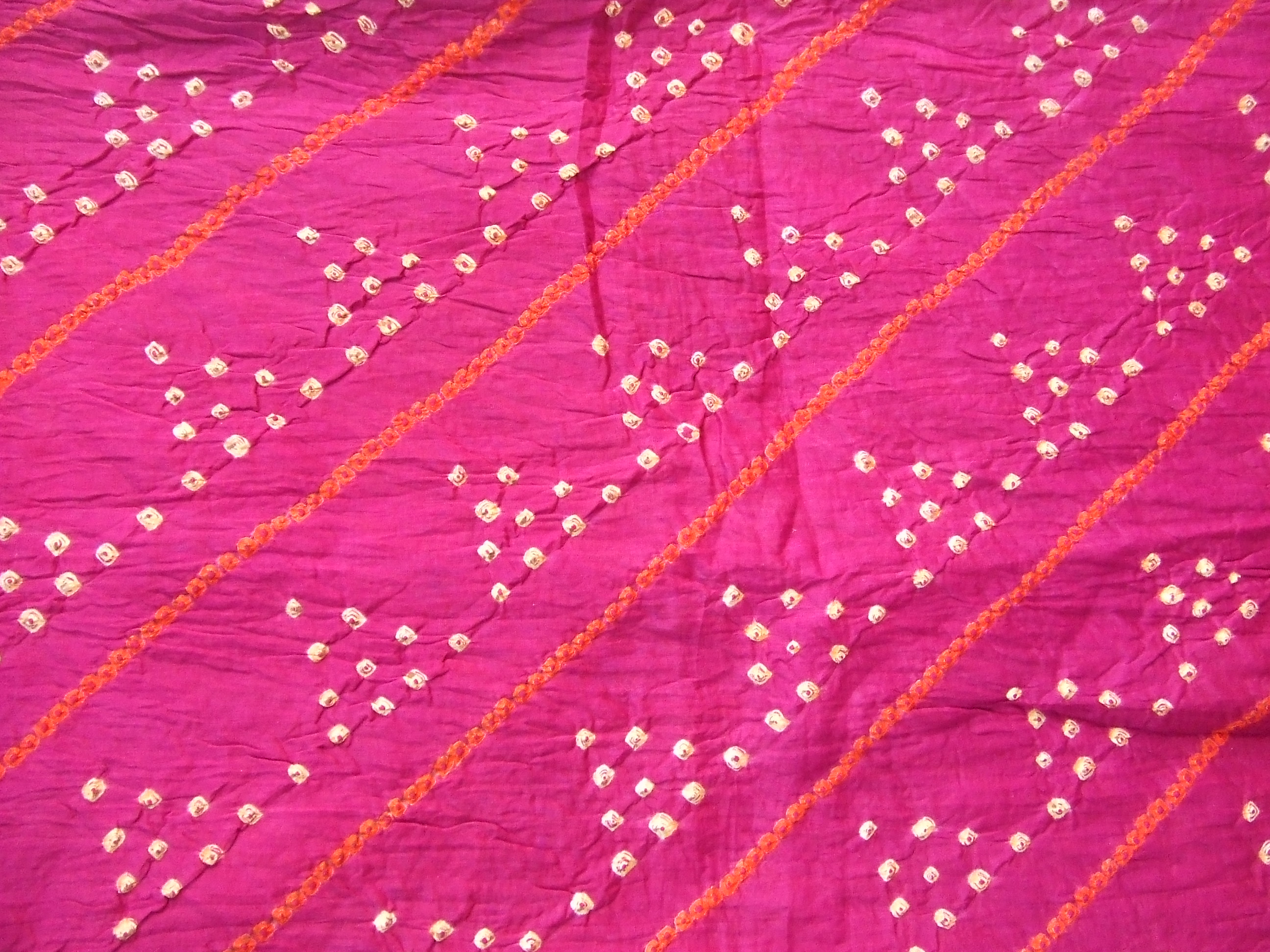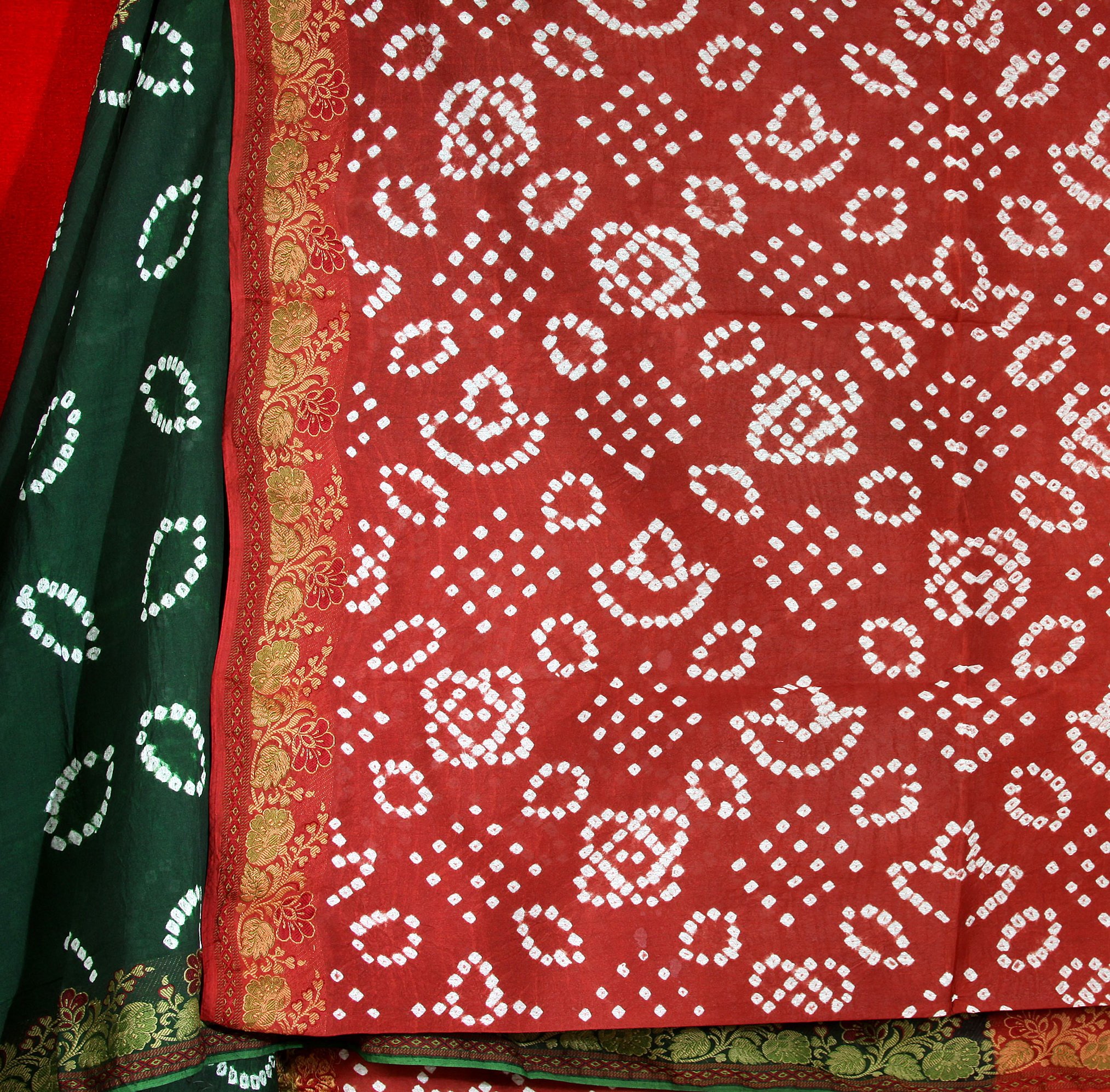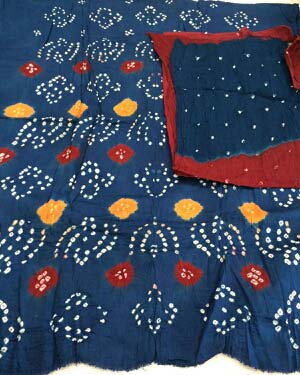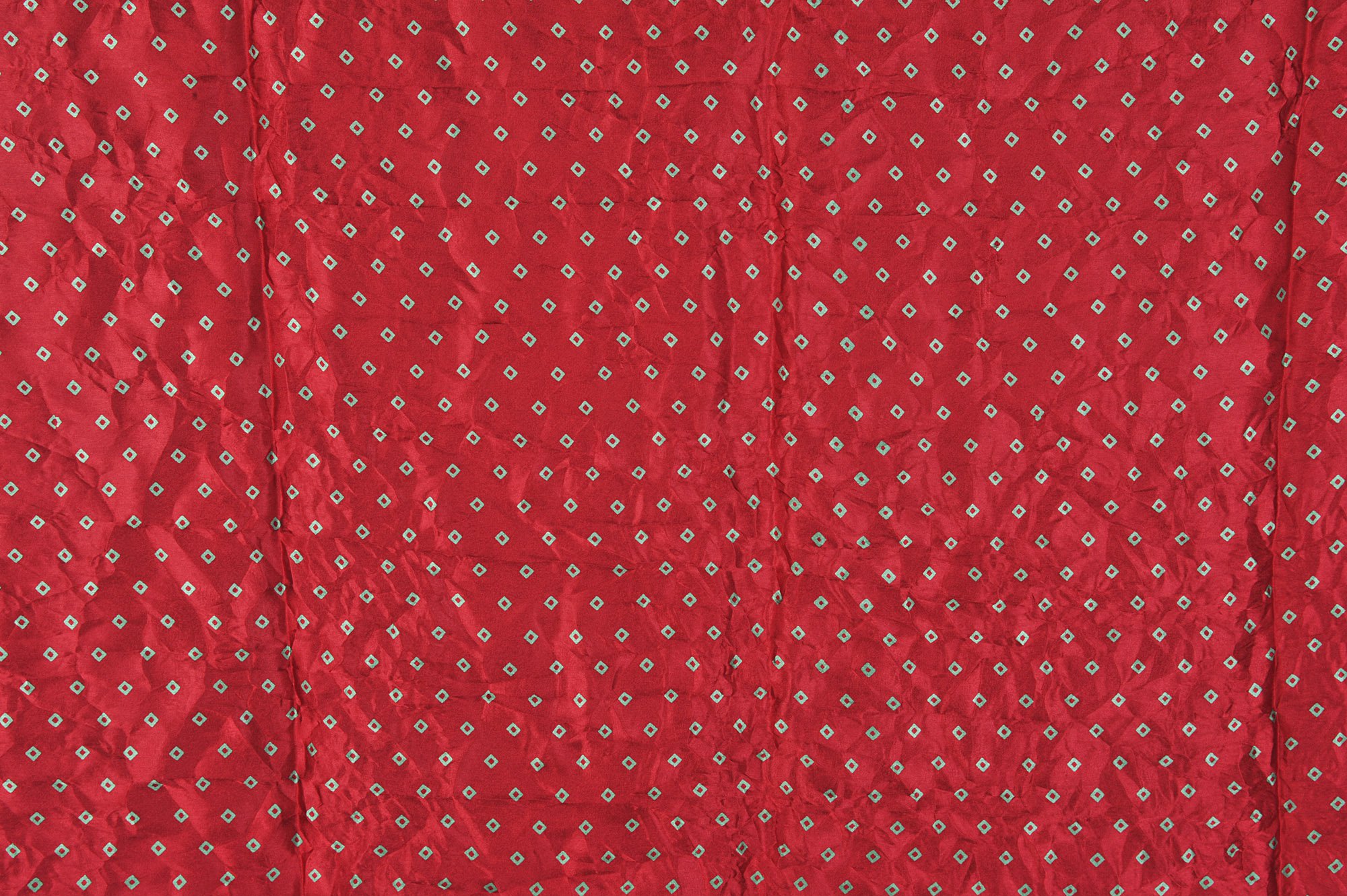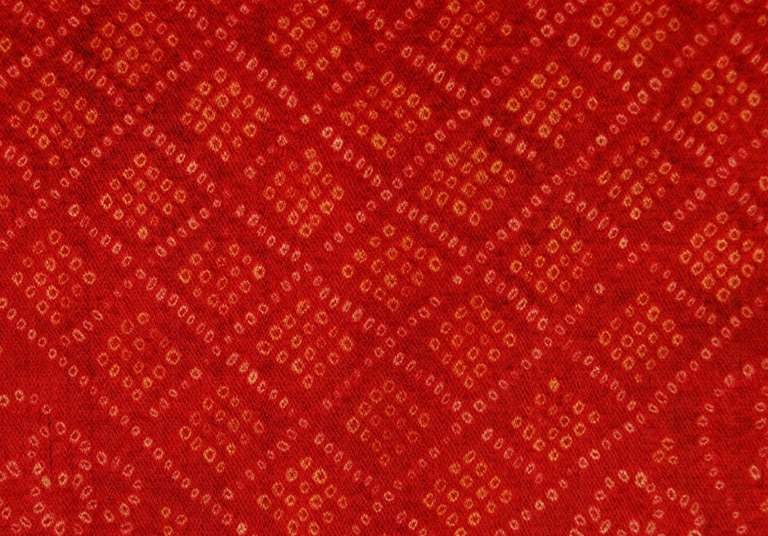Bandhani
Bandhani is a craftsmanship from southern Asia, folded, tied and dyed textiles in order to provide them with color and relief-like patterns. The term is derived from the Hindi word baandh from, which means " setting ", and refers to both the technology as well as the finished product.
Dissemination and names
This artful textile technique of setting and dyeing reached in the past to China and later to Japan, where this technique is called Shibori. Traces of it are found in various countries of Southeast Asia. This technique is also known internationally among the Malay- Indonesian name Plangi. In India, this craft is exercised only in two states, Gujarat and Rajasthan, two neighboring regions in western India.
Technology
The technique used is generally known by the English term tying & dying. It consists of two main processing steps tying and dyeing.
Setting - Tying
Of white, usually unbleached fabric is folded into two layers before setting. Currently there are two methods in use, of which the former is still quite uses conventional materials: A Rangara ( dyers ) first marked with a string that is in a washed out color solution immersed ( in Kutch known as Geru ), the large areas. Geru is an aqueous solution of red ocher ( red ocher ). Then he stamped with the Geru -soaked pressure block on the individual patterns. Gaps between the connection points are traced with a bamboo splinters. A much faster and more accurate method is, however, more and more through: It produces a thin, clear plastic mask with holes in the desired design, puts it on the cloth and rub with a Geru - soaked cloth or sponge over it, with the pattern on the underground is emerging.
After transfer of the design or pattern the fabric is distributed to women to bond it in accordance with the pattern. The setting is mostly carried out in home work of women and girls. The knowledge is always passed on within the khatri ( plant community, guild ) from mother to daughter. Depending on the material to be bonded (silk and cotton ), the yarn is chosen accordingly.
The women are scattered all over the region in many villages. The setting may take two weeks, but also be a function of the complexity of the design and the number of points to be ligated, up to one year.
In the loose in your lap material, the material is tied with simple cotton. To this end, the material is pushed up from the bottom with the long, pointed finger nail of the little finger (or with the Nakhalia, a ring on which a thorn sits ) and the resulting Stoffwulst fast six to eight times wrapped. Then the thread without cutting is continued to the next point until all points that are to remain white, are wrapped.
These fastenings reserve the color of fabrics, and after the winding shows a pattern of small white rings whose center is displayed in the color that has been stained with the last. ( The fabric is always first stained with the lightest color. )
Dyeing - Dying
While the setting is considered typically female task, the next step is up to men, dyeing.
The finished cloth is then tied off over to the master dyer. After the initial setting of the fabric is usually dyed in yellow or another bright color. After rinsing, wringing and drying the material at the points is bound to appear later as yellow dots, and then dyed in a darker color such as red or green. After the first dyeing process generally follow new bindings and other stains.
After completion of the last dyeing bath, the fabric is washed and, if required, reinforced. Splash of color can be applied both manually and by separate baths during the various dyeing operations. This technique is widely used in Rajasthan, Gujarat, however, hardly. Bright colors can be applied after the first yellowing before the material for the next coloring is tied off. You can also after the last dye bath wrap single white or yellow dots again, and color them in a stronger color such as blue.
After the last final dye bath, the cloth is completely dried before it is opened. Thus, the pattern remain on the silk for many years.
Young Indian designers such as Kamaldeep Kaur, working not only with the two -dimensional effect of the ( two-dimensional ) pattern on the silk, but also with the three-dimensionality that arises because the elevations of the open bindings remain in silk fabric and so a relief-like " silk landscape " emerges.



